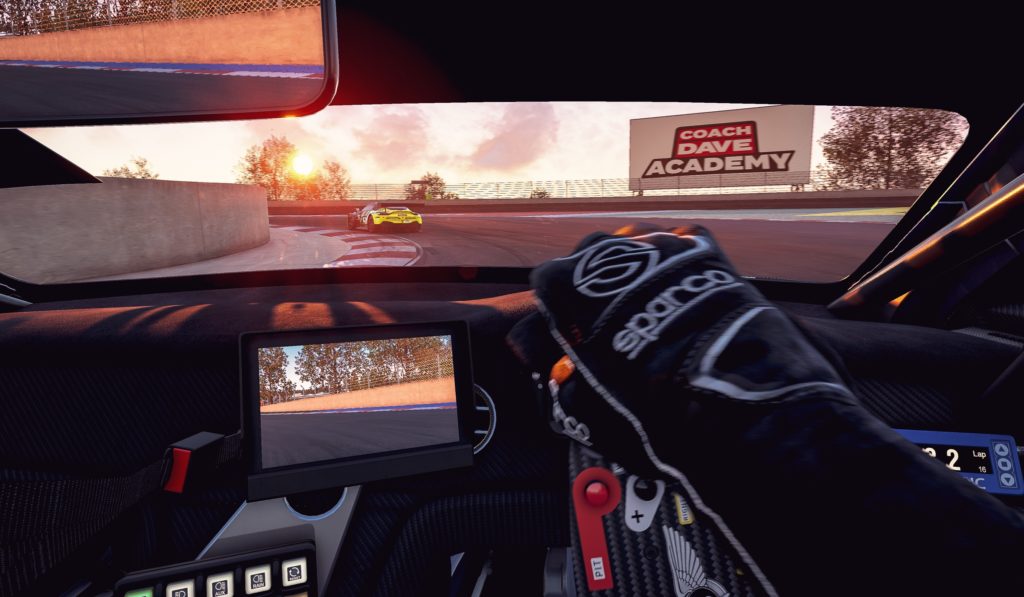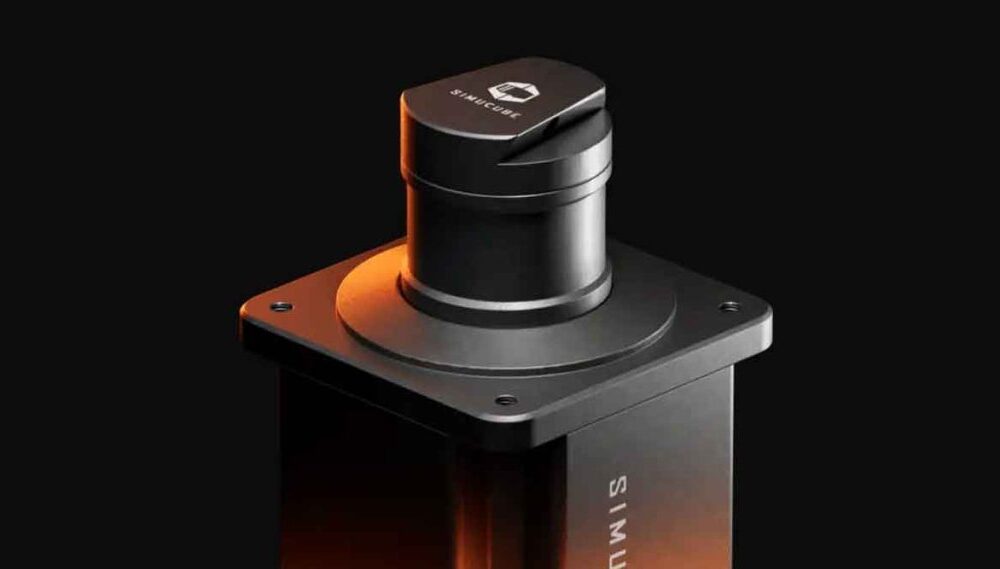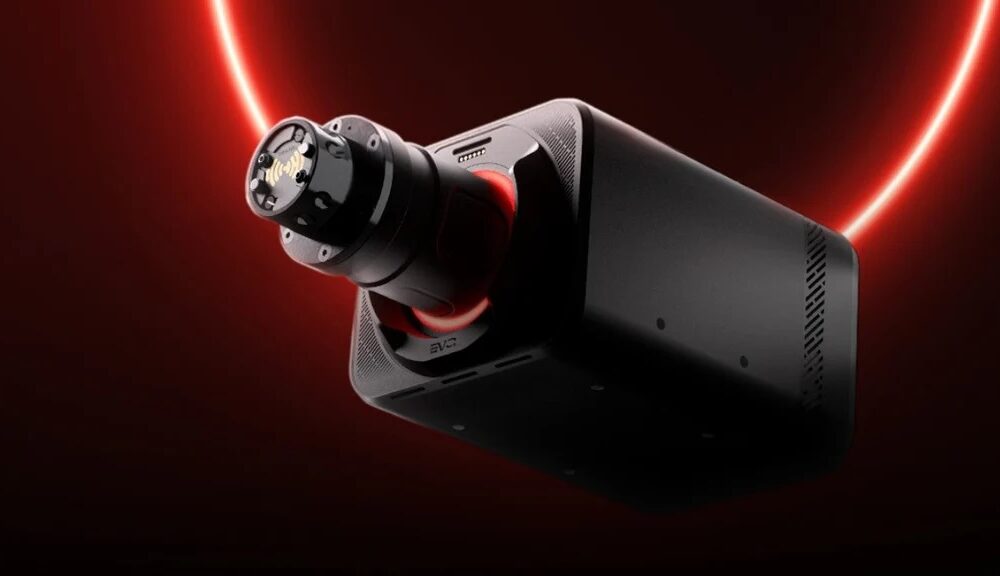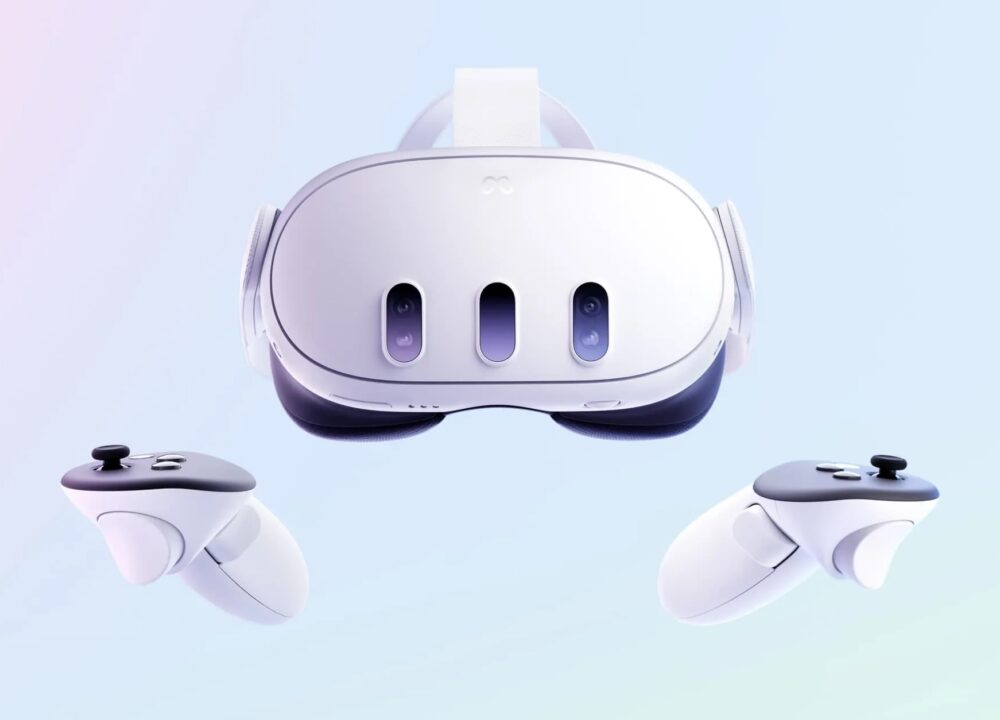Simulation racing, known better as ‘sim racing’ inside the community, is the concept of virtual races taking place on simulated software.
While this may look somewhat intimidating on the surface, the variation of the term “simulated” refers more to the accuracy of the variables being mimicked by the cars in the software. Arcade-like racing video games such as Forza Motorsport, Need for Speed and others are geared more towards a pick-up-and-play style and approach.
Sim racing, however, focuses much more on the users’ requirement to develop an understanding of variables such as tyre temperatures, suspension geometry and the ability to feel how a car is reacting across the tarmac in various situations like rain.
As a result of this enhanced realism, sim racing finds itself in a unique niche where the skills between virtual and reality are, arguably, the most transferable compared to other video games. They are, in fact, so accurate that many real-world motorsport teams (such as Ferrari, Mercedes etc.) will use simulators to train their drivers before they are physically present at the real tracks.
“Simulators are for racing drivers what treadmills are for runners. It’s not quite the real thing… But you’re still running.”
The questions of why sim racing is so popular and why it’s so competitive can be traced to the same roots:
- The cost of these simulators compared to their real-world cars is extremely low. As you will see in future articles, we can help you find a simulator for under £1000 – no extra costs for spare tyres, repairs when you crash or to travel the globe to experience some of the world’s greatest racetracks. This reduced entry barrier means that the size of the community is larger, and thus the talent pool much stronger.
- The time investment required to reach a ‘competitive’ standard is somewhat small. To race in Formula One, for example, drivers such as Lewis Hamilton will have had to complete hundreds, if not thousands of hours to drive at a high level. Thanks to the ability to adjust competition rulesets through simulation software (such as having identical car performance, reduced damage effects and the introduction of rating systems) the vast majority of users can race wheel-to-wheel against drivers with similar abilities in a fraction of the time. This means you can come home from work, jump on the simulator and feel the spoils of victory when you beat your opponent across the line.
- Sim racing has grown so popular because of the community itself. With such an expansive community (not only in volume but geographical range as well) there’s a group of individuals for your preferred type of racing. Whether it be emulating the feats of Ayrton Senna in Formula One cars around classic tracks, darting through the forests of Finland in a modern rally car or even just cruising in hypercars through the picturesque hills of L.A or the Transfăgărășan, there’s a community of like-minded individuals who will join you on track.
- Sim racing went through a super boom during COVID-19 when no one could leave their homes, creating this golden age for sim racing over a 3 year period that has stuck. This meant people picked up hobbies such as sim racing for the first time, real-world professional drivers installed sim rigs into their homes for the first time to continue racing and drivers were able to turn their sim racing hobbies into full-time jobs.
Sim racing may appear as a super competitive, confusing market on the surface; one where only the best survive. However, this couldn’t be further from the truth. Sim racing is a place where those with an interest in anything automotive or a desire to create a legacy can come together and race in some of the world’s top cars, against the best individuals, and on the finest racetracks in the world.
Getting Started In Sim Racing
So, whether you’ve seen Lando Norris and Max Verstappen in a simulator and fancy racing them, or you just want to drive the cars of your motorsport heroes and idols; you’ve decided to take the next step on your journey and see how to get started in sim racing – congratulations! Whilst it may seem like there’s so much to work out, by following this guide we can ensure you don’t become overwhelmed and can enjoy the first steps on your journey!
Work Out What You Want To Race
A quick search of “racing simulators” or “racing games” on Google will bring up a plethora of choices. Sim racing is now in a fortunate enough position where there is such a wide variety of games that you can pretty much drive any car that you’d like.
Before you do this though, ask yourself these questions below. Based on your answers, we’ve compiled this handy flowchart to help you decide:
- What kind of cars do I want to drive?
- What kind of motorsport series do I enjoy watching? (F1/Le Mans/Rally etc.)
- Do I want a subscription-based model or just a once-off purchase?
- Do I already own a games console or PC?
In Summary, Your Choices Could Be Simplified
PlayStation – Gran Turismo provides the widest range of content with its latest iteration, whilst F1 2024 and EA WRC can appease your appetite for a specific form of motorsport. Assetto Corsa Competizione lends itself the closest to the simulator genre, however, and is a strong starting point for those aiming to be in competitive esports.
Xbox – Again, F1 and EA WRC are on offer, along with Assetto Corsa Competizione now with its crossplay feature, but Forza Motorsport will also provide you with an Xbox alternative to Gran Turismo if you’re after a fun competitive edge to be filled.
If you are just getting started with sim racing and you are racing on Assetto Corsa Competizione on console because you want the closest thing to actual sim, the best place to race is SimGrid Seasons, which has a competitive daily racing ranked system with three different competitions for you to try out.
If you are someone on PlayStation who leans heavily into the Gran Turismo world, Delta for GT7 could be just for you. Delta is the first-ever tool that gives you the ability to analyse your data in extreme detail, giving you the opportunity to gain lap time like never before.
PC – With the widest range on offer, you can have any of the above options, but also the following:
- Assetto Corsa will provide the largest variety of cars & tracks in the entirety of sim racing with daily peaks of 15,000+ players being the norm.
- Not to be confused with, Assetto Corsa Competizione, which provides you with a GT3 simulator created with the support of real-world teams and drivers. It’s super competitive and super rewarding. Backed by the SRO Motorsport group to bring Esports competitions to the front for gamers.
- RFactor 2, Automobilista 2 & Kartkraft will all provide you with limited base content, but passionate communities.
- iRacing is the largest sim racing platform in the world and operates on a monthly subscription-based model, which includes a free pre-set selection of cars and tracks in your membership. More can be purchased as you progress through your series or if you want a niche series to follow. With over 200,000+ player bases across the world.
- Raceroom finds itself at the opposite end of the spectrum, with plenty of free content and no upfront costs – often viewed as a friendly introduction to racing.
- Le Mans Ultimate is the latest game to come to the PC platform. Focusing on the World Endurance Championship it brings LMP2, Hypercar and LMGTE/GT3 racing to life.
Find Out Where You Want To Race
Again, an easy approach to do this is to ask yourself these questions:
- What kind of cars do I want to drive?
- How serious do I want the rules and regulations to be?
- Do I want these races to be broadcast on social media, or does this not matter?
- Do I want an officially sanctioned and ruled race or will a non-official race matter?
Ultimately, these above questions aren’t too important in terms of restricting the areas you choose to race. After all, you may find that you wish to race competitively in one style of car, whilst having a more relaxed approach to another.
A good starting place for finding racing leagues or communities is through our platform. The SimGrid. A tailored-made platform for sim racing with over 1000 different communities hosting events on a daily and weekly basis for AC, ACC, AMS2, RF2, F1, GT7, Forza, iRacing and more.
On top of this, The SimGrid has just been confirmed as technical partners for both Le Mans Ultimate and AC Evo, which is coming in 2025, where SimGrid will be helping build and develop both of the online racing portals to bring competitive racing to the forefront of these sims.
What Sim Racing Hardware Should I Purchase?
When it comes to purchasing your sim racing hardware, it can be tricky to find the balance between cost and quality. You’ll need a racing rig, a wheel, some pedals, certain peripherals and more. It can be overwhelming to get started. We have a few options we would like to show you and yes, you can probably find it cheaper elsewhere, but this way you’ll be purchasing from one of our vetted sellers, offering some of the best equipment in the business, with the warranty and support from them to protect you!
Racing Wheels
The humble racing wheel has changed dramatically over the last few years, with technology and innovation taking over. A wheel’s benefits cannot be underplayed – they allow you unique insight into how the car is handling, the track surface, changes in weather conditions and of course, give you the extra connection to the car and precision that we all desire.
However, there are multiple ways in which this detail is delivered. Racing Wheels and Wheel Bases can be divided into a few categories; gear-driven, belt-driven and direct drive. This refers to how the ForceFeedback is transferred from any game to the wheel.
In such a saturated market, picking out the best options can be tough, so, we composed guides on the best options when looking for The Best Sim Racing Wheels in 2024 and The Best Direct Drive Wheel Bases in 2024. When you combine a direct drive base with a top-end wheel, you are well on your way to experiencing the real thing.
Racing Pedals
Sim Racing Pedals are so incredibly important in allowing for precision when racing and battling, so picking the best ones for your rig are essential.
You need to have confidence when you are using the throttle, brakes and clutch and in today’s market they are getting extremely close to feeling like you are in the actual race cars. wA good set of pedals will help you with trail braking, modulating the throttle and more. Let’s go through which ones are the best for you.
We have created a perfect guide covering no less than 14 of the best options in 2024 with our Sim Racing Pedals Buyers Guide. Follow this and you are putting your best foot forward.
Racing Rigs
Another essential part of any Sim Racing setup is the Racing Rig you will be using. A sim racing rig is supremely important to get the most out of your racing wheel and pedals, as it gives your setup an extra level of sturdiness, allowing you peace of mind that you aren’t going to shake your table or desk to pieces, or worry about pushing your pedals across the floor under load. The rig also puts you into the optimal seating position, allowing you to race in comfort, knowing that you are in the best driving position.
So depending on your budget, we have you covered. Firstly we take you through some of The Best Cheap Sim Racing Rigs on the market if you are under a tight budget. Then we have our Best Rigs On The Market when money is no cost to you.
Sim Racing Gloves
The final piece to the puzzle and arguably the most useful part of your setup is the gloves. All racing drivers wear gloves, so why don’t you? They offer great protection to your wheel so that any high-quality materials such as sued are kept in pristine condition. Not only do they protect your hardware, but of course you, too. Gloves will protect you from blisters or areas of rubbing, allowing you to focus on the race at hand without distraction or pain. There are many great options as to which ones to buy, so take a look at our guide to The Best Gloves in Sim Racing.
How To Get Better In Sim Racing
For the majority of new sim racers, being the fastest person on track does not come instantly. Much like any other skill, sim racing is one which takes time, patience and dedication in order to improve.
When it comes to improvement, don’t focus on the gaps to the fastest drivers, but rather focus on how much time you’ve gained, how you’re able to feel the car more and other elements that previously seemed impossible – it’s as much a mental game as it is physical.
Gain seconds in lap time with our incredible iRacing setups that include professionally developed setups and referance laps for every car available in the official weekly racing series that you can find on iRacing.
Routines, routines, routines
It’s no secret that motorsport is mentally draining. Ask any racing driver and they will all tell you that the amount of focus required when you’re on the limit is unlike anything you’ll ever experience. It is therefore important to ensure you set aside enough time to learn, develop and improve on your skillset.
Before you even jump into the simulator, think about what you’re aiming to achieve from the session. Is it to learn how to take a specific set of corners? Is it to learn how ride heights affect the car? The biggest mistake you can make is to just jump in and pound lap after lap with no reference of whether you’re improving.
You can always seek professional coaching. With the Coaching offered by Coach Dave Academy, you can Improve your sim racing skillset by getting world-class coaching from professional drivers and sim racers. Improve your lap times, consistency, and your race craft after just one hour of coaching with us. They offer coaching for iRacing and Assetto Corsa Competizione, but it can be transferred to many titles.
By creating a routine and schedule of driving targets, you’re already placing yourself ahead of those around you on track. Don’t be afraid to take regular breaks (we know it sounds silly) but as is often the case, you can become so burnt out by one element of driving that a break away from the wheel gives you time to reflect and improve.
Services like iRacing, Assetto Corsa and GT Sport all feature ‘regular’ races (e.g., every half hour/hour). Develop a routine where you can allocate time to improving a specific area of your racing and finish it with a race – you’ll be surprised how quickly you can learn new skills, and how transferable they can be. Furthermore, by forming a routine you are training your mind to follow a set of procedures and improve on them every time.
Don’t be disheartened if you don’t see major improvements for days or even a couple weeks, instant results are a rarity. However, coaching can certainly speed up this process to help you focus on where to improve.
Data Is Your New Best Friend
The beauty of a racing simulator is that you can, in most cases, receive either real-time or post-session telemetry information (often known as data). Whilst on the surface these may look like complex graphs and numbers, they can be invaluable in telling you about your driving style.
Consistency, smoothness and confidence are key in sim racing and so if your data is looking scrambled, it’s possibly due to your driving style. Coach Dave Academy offers guidance and walkthroughs on how to interpret data, and you should really look into it!
The brand-new Coach Dave Delta App gives you your very own performance engineer, race setups for iRacing and ACC, a Never Lift coaching course, along with a new telemetry tool for data analysis.
Sim Racing vs Real Life: Does Sim Racing Make You a Better Driver?
The beauty of sim racing is that it is, as we have said, arguably the most transferable form of competitive gaming you can compete in. With that being said, the end goal for many sim racers is to ultimately enter real motorsport. If you’re lucky enough to find yourself in this position, or believe you’re quick enough to transfer the skills, it’s important to approach it in the right manner.
Set The Right Targets
Much like we identified when you first started racing, it’s important to treat this next step in the same manner. You’re unlikely to be offered a test session in a Formula One car by an F1 team as a result of your time on the F1 games, whereas the possibility of a GT3 test drive is much more feasible based on the associated costs for the prize winners.
It is, therefore, important that you set the right target of entering competitions where prizes in real tests can be achieved. Here are a few examples:
- Assetto Corsa Competizione hosts its SRO GT E-Sport Series, where many of the factory teams offer their representative sim drivers test days or they get paid to race.
- rFactor 2 regularly offers the winners of their Formula E series test days in real Formula E cars.
- RaceRoom regularly host a Road to DTM series where the winner of the sim racing competition can earn a real drive in the DTM series.
- iRacing host the Porsche Supercup Series and the eNascar Coca-Cola Series where over $200,000 in prize money can be won for both and real teams keep an eye on the drivers to switch over to the real thing.
Connections Build The Bridge
The second key aspect of transferring skills is the problem that everyone in motorsport faces: budgets. Unless you’re one of a select few, the harsh reality is that little will come after your test day without you being willing to open your wallet. Results on a simulator are indicative of performance, but cash is paramount in moving things forward.
Sim racing is full of individuals who all share the same passion, meaning you have a great starting point to look for prospective partners. Currently, the ‘sim-to-real-driver’ story is very few and far between, but some have achieved it. In reality, you will actually find a lot of the very fast sim drivers are coming from real-world racing, where they may have run out of budget to make it, but can win money and make a career from sim racing instead.
In truth, we could write a whole article around how to attain sponsorship, but the key takeaway is that it’s crucial to reach out to individuals in your leagues, racing groups or teams. You never know who you might meet that will be willing to support your journey.
Do The Prep Work – Not Just Virtually
As you prepare for your real-life test, it’s important to ensure that you’re physically and mentally fit to take on the challenge of driving a car. It’s well known that for the most part, the majority of simulators fail to accurately replicate the physical forces you’ll feel on your body, and so the last thing you want to do is form the stereotype of an unfit gamer.
The temperatures in the cockpit of a racecar can exceed well over 100 degrees. Throw in the constant lateral and longitudinal strains on the body and you can see why a proper strength training program can help temper the effects of this.
In summary, there are 4 key areas of your training you should focus on, with an emphasis on the importance of training regularly in combination with a well-balanced diet:
- Cardiovascular training – To allow for proper oxygen utilisation during your drive.
- Core Strength – To allow for combating the G-forces you’ll experience and for things like brake pedal application.
- Flexibility – To aid with injury risk reduction in the event of an accident.
- Cognitive Training – The ability to concentrate for longer, analyse situations quicker and generate more accurate predictions of what may happen.
If you’re at a loss at how to best create a training program, there are a wide variety of resources available online that will help you build a training program around what areas of fitness you need to improve on. You, yourself, will know exactly what areas you are stronger in than others, and so don’t be afraid to be honest about this. Red Bull has a great article, for example, on how to improve your core strength.
When it comes to mental training, it’s much harder to find articles relevant to racing. The key area of mental development to be aware of is that of memory. When turning into a corner on a simulator, your brain instinctively knows within seconds how much brake force and steering angle to apply, as well as where to position the car.
By improving your memory through memory-orientation tasks, you can increase the number of scenarios your brain can recall instantly if something is to happen (such as the car beginning to slide or getting hit). These scenarios and experiences are undoubtedly what you will face in the real world, and so being able to handle anything that comes your way is key.
There is no doubt that when you roll out into the pitlane for the first time, your body will become oversaturated with the amount of stimuli being presented to you. By creating training routines around the above steps, however, you can reduce the amount of energy and strain this will have, allowing you to relax, focus and enjoy driving all the much more!
Becoming A Pro Sim Racer
The ‘road to pro’ as it’s often called in sim racing, is the end goal for the majority of drivers. With the recent surge of investment in Esports due to the collapse of the real world, the prospect of working full time in a simulator to race is a very real possibility, and the likes of G2 Esports, Williams Esports and others have evidenced this.
Whilst the term ‘pro’ is somewhat ambiguous, and can differ between individuals, you should ultimately be looking towards the following:
- Competing in high-level competitions on a regular basis
- Being paid by a team and/or sponsors to represent them
In terms of how successful you can be, there’s really no limit. If your end goal is to be supported by one of the top sim racing teams, then your success is very much linear in terms of progression. If, however, you decide to go down the independant route, then you can capture as many sponsors as you desire. There are, of course, trade-offs between these routes.
- If you sign to a team, you’ll have a regular income + travel expenses covered, as well as support from a wide range of individuals.
- If you explore the solo route, you won’t be governed by sponsor restrictions but may face a harder time getting up and running to find sponsors.
In terms of where to find support or put yourself on the radar of the top teams, you should look to compete at the highest level of your racing sim as possible – whether that be the iRacing world championships or the SRO E-Sport series. If you perform well at this level, you can evidence that you’re worth the investment moving forward. Investment is ultimately the key term; you’re after investment (albeit in yourself) and not just for someone to throw their money at you.
Once you’ve established a competitive CV to show you’re marketable, the next step is to ensure you’re presenting yourself professionally on social media. Social influence is what many companies will use to measure your profitability (if your goal is to generate more sales).
Make sure your social media platforms are clean, presentable and don’t have anything you wouldn’t want your mum seeing. Focus on growing this as much as you can. The higher the numbers you have, the higher the numbers you can ask from your sponsors.
Hopefully, once you have the results and the social media presence to match, gaining support will be easier! Look towards companies already inside sim racing, explain to them your story and most importantly, show how, with your unique fanbase, you can increase sales. This is the key to every sponsorship, and with the right approach can generate you the support you need.







